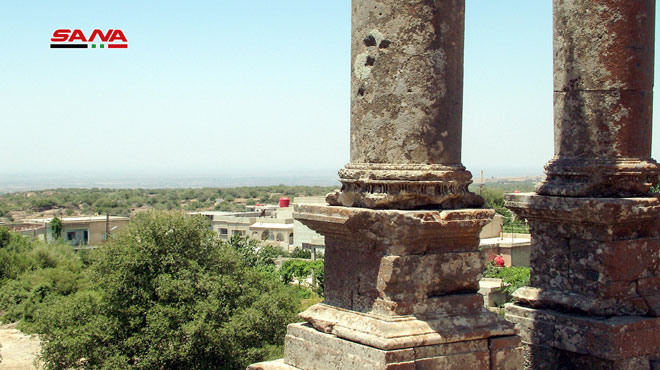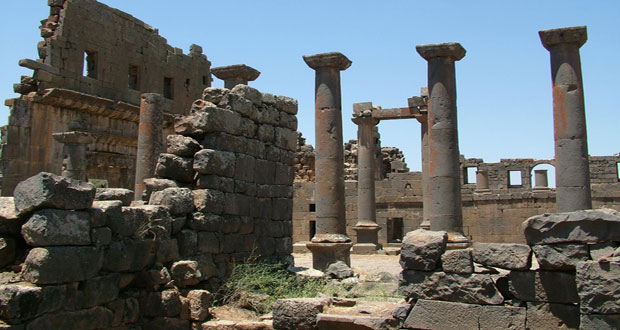A significant number of columns, along with sections of walls and foundations, remain standing, offering a vivid sense of the temple’s original layout. The main façade is composed of Corinthian-style columns topped with intricately carved capitals. Within the inner sanctuary lies an elevated platform (cella), which historically held the statue of the deity.
Stone carvings and decorative reliefs adorn the temple, featuring solar symbols and geometric patterns that reflect Roman religious iconography and architectural aesthetics. The temple was constructed using local black basalt stone, which imparts a distinctive character to the site.
The Temple of the Sun God in Qanawat is one of the most prominent archaeological landmarks in As-Suwayda Governorate. Located in the town of Qanawat—known as Canatha in Roman times—the temple was built in the 2nd century CE in honor of Helios, the Roman god of the sun. Its Corinthian façade, sculpted capitals, and elevated cult platform exemplify the refined architectural style of the period.
Despite the passage of centuries, the site retains many of its original structural elements. The temple forms part of a larger religious complex that includes additional temples, theaters, and public squares, underscoring Qanawat’s significance as a major religious and cultural center during the Roman era.









